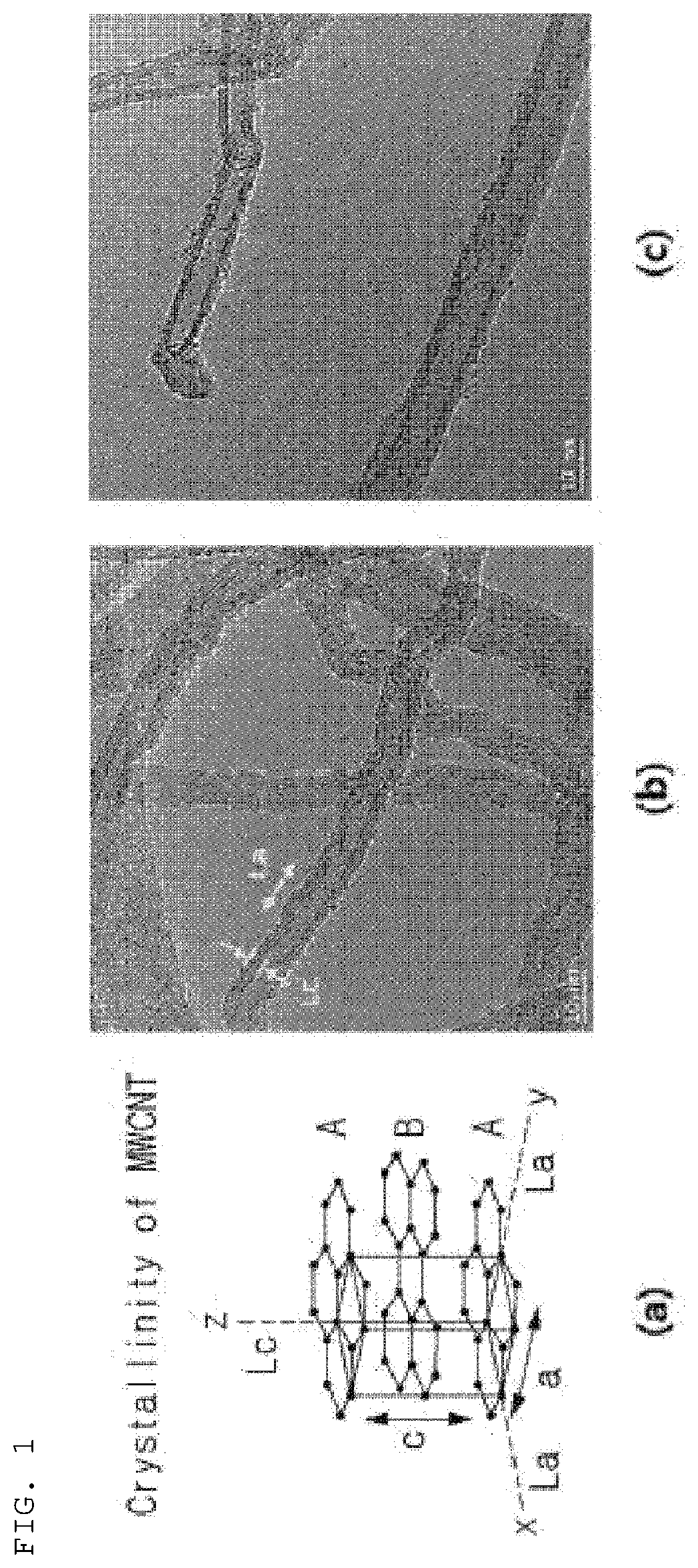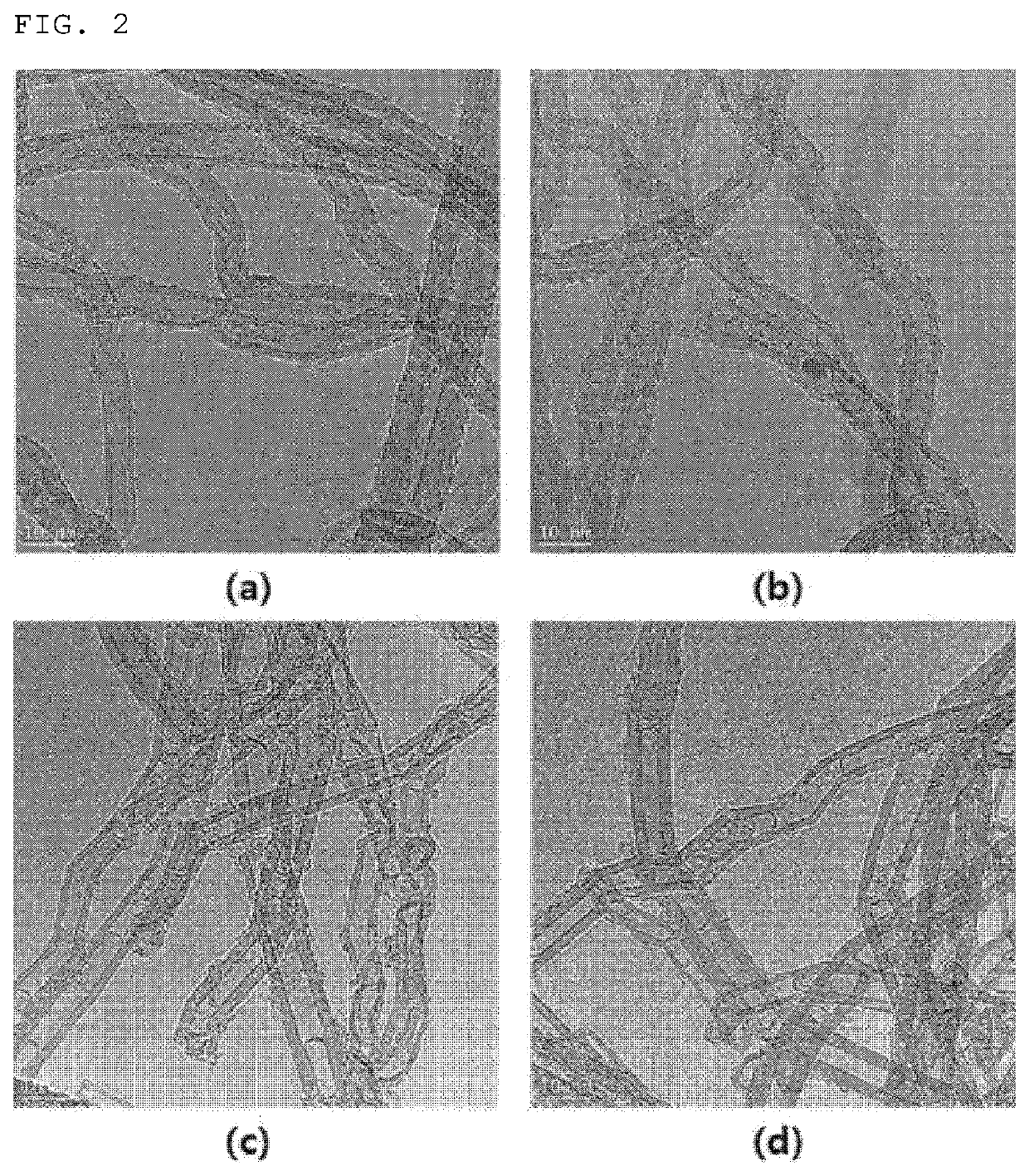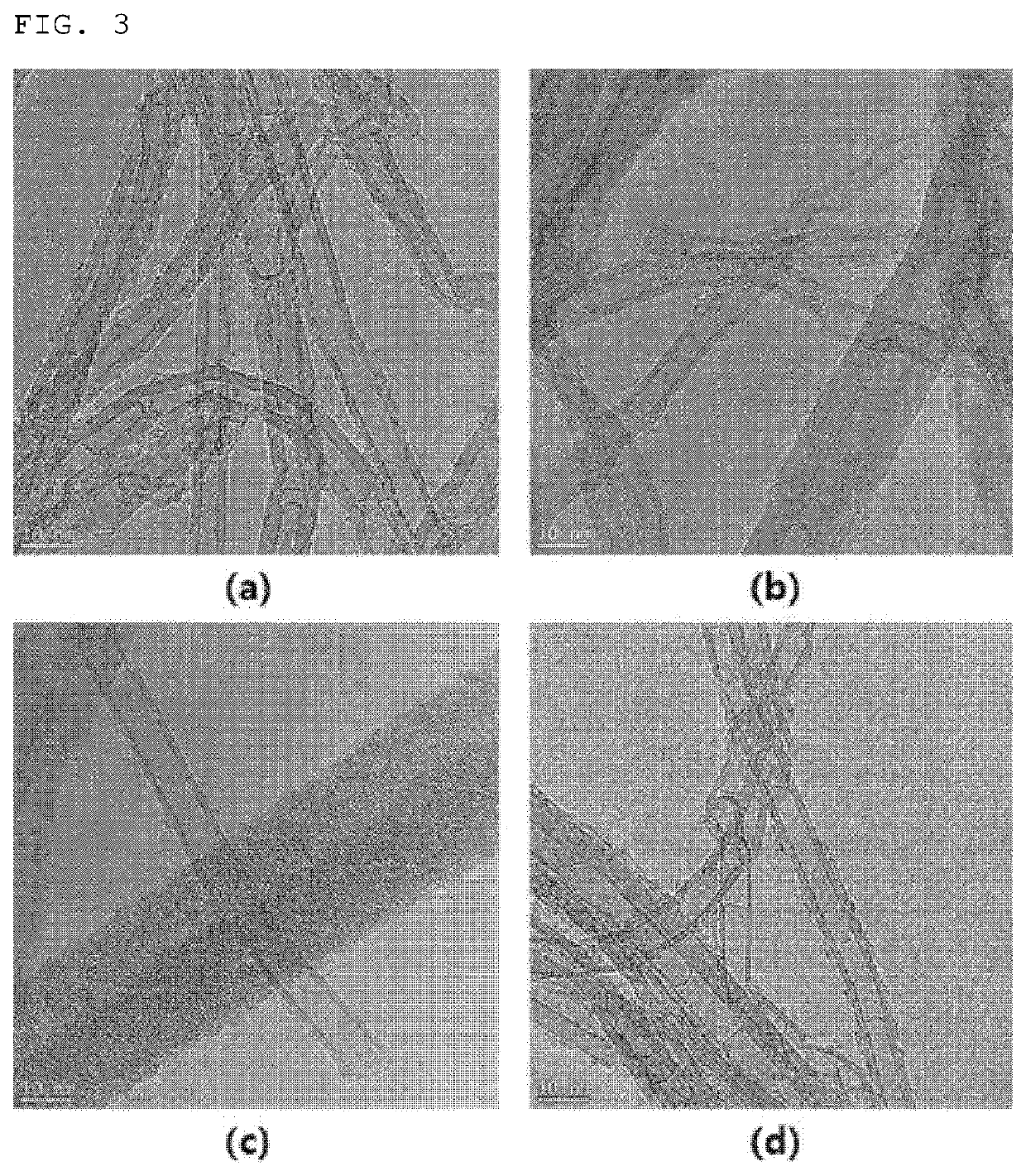Carbon Nanotube, And Electrode And Secondary Battery Including Carbon Nanotube
a carbon nanotube and secondary battery technology, applied in the field of carbon nanotubes, electrodes and secondary batteries including carbon nanotubes, can solve the problems of insufficient effect of improving electrical conductivity, complex single layer structure, and increased manufacturing cost, and achieves low crystallinity, high flexibility, and high flexibility.
- Summary
- Abstract
- Description
- Claims
- Application Information
AI Technical Summary
Benefits of technology
Problems solved by technology
Method used
Image
Examples
example 2
Carbon Nanotubes
[0096]Carbon nanotubes having an average diameter of 12 nm were prepared in the same manner as in Example 1 except that Commercial Scale Reactor (Capacity of internal reaction vessel: 4 m3) was used as a fluidized bed reactor and the inflow rate of the mixed gas was changed to 28,000 sccm.
experimental example 1
on Nanotube Structure
[0105]Each of the carbon nanotubes of Example 1 and Comparative Example 1 were observed through a TEM and the results are shown in FIG. 1. Specifically, FIG. 2 is TEM photographs of the carbon nanotubes of Example 1 before graphitization treatment at 2500° C. ((a) and (b) of FIG. 2) and TEM photographs of the carbon nanotubes of Example 1 after the graphitization treatment ((c) and (d) of FIG. 2). FIG. 3 is TEM photographs of the carbon nanotubes of Comparative Example 1 before graphitization treatment at 2500° C. ((a) and (b) of FIG. 3) and TEM photographs of the carbon nanotubes of Comparative Example 1 after the graphitization treatment ((c) and (d) of FIG. 3).
[0106]When comparing (a) and (b) of FIG. 2 and (a) and (b) of FIG. 3, it can be seen that the carbon nanotubes of Example 1 have more nodes (curved portions) and have a less linear shape than the carbon nanotubes of Comparative Example 1.
[0107]Also, referring not only to (a) and (b) of FIG. 2 and (a) an...
experimental example 2
arbon Nanotubes
[0108]The carbon nanotube powder resistance of the carbon nanotubes of each of Examples 1 and 2 and Comparative Examples 1 to 4 was measured in the following manner.
[0109]Using Loresta-GX (MCP-PD51) equipment, 0.5 g of carbon nanotube powder was filled in a sample holder and pressed to 400 kN, 800 kN, 1200 kN, 1600 kN, and 2000 kN to evaluate a powder resistance value (Ohm·cm) at 60 MPa.
PUM
| Property | Measurement | Unit |
|---|---|---|
| specific surface area | aaaaa | aaaaa |
| diameter | aaaaa | aaaaa |
| thickness | aaaaa | aaaaa |
Abstract
Description
Claims
Application Information
 Login to View More
Login to View More - R&D
- Intellectual Property
- Life Sciences
- Materials
- Tech Scout
- Unparalleled Data Quality
- Higher Quality Content
- 60% Fewer Hallucinations
Browse by: Latest US Patents, China's latest patents, Technical Efficacy Thesaurus, Application Domain, Technology Topic, Popular Technical Reports.
© 2025 PatSnap. All rights reserved.Legal|Privacy policy|Modern Slavery Act Transparency Statement|Sitemap|About US| Contact US: help@patsnap.com



